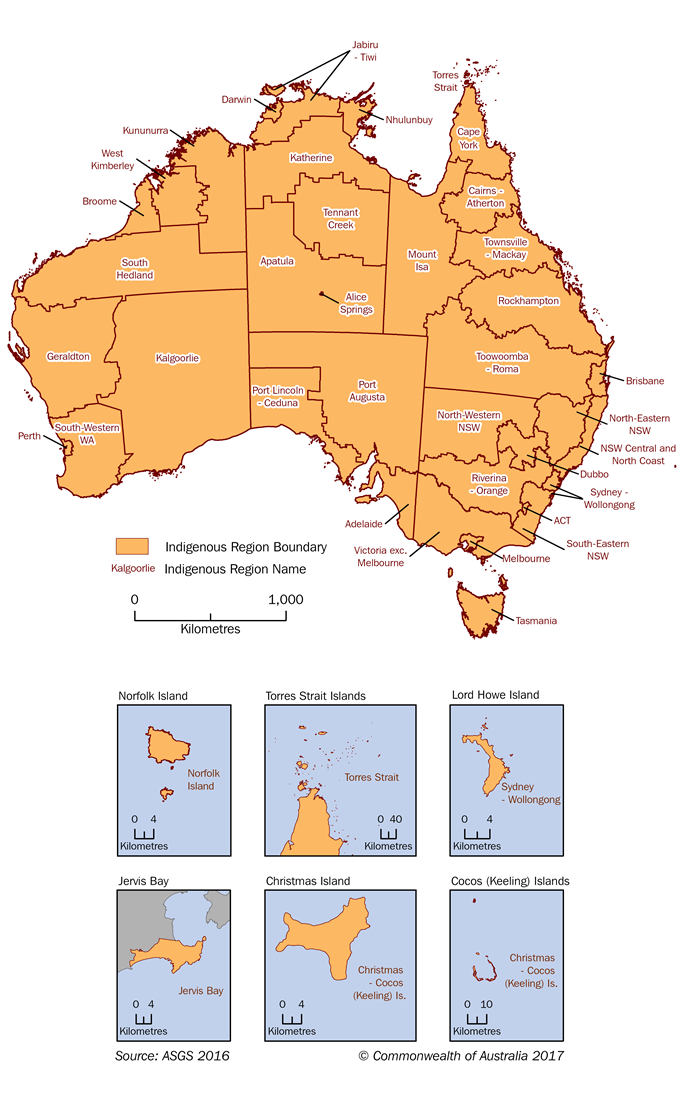This is the second release of the publication titled Census of Population and Housing Counts of Aboriginal and Torres Strait Islander Australians (cat. no. 2075.0). The first release took place in June 2012 and can be accessed via the ‘Previous releases' menu above.
The five-yearly Census of Population and Housing is the only comprehensive source of small area data about the Aboriginal and Torres Strait Islander population. The Census provides a wide range of socioeconomic indicators to support planning, administration, policy development and evaluation in the public and private sectors.
This release presents counts for Aboriginal and Torres Strait Islander peoples from the 2016 Census of Population and Housing. Counts are disaggregated by a range of ABS and non-ABS geographical structures (as set out in the Australian Statistical Geography Standard (ASGS), to satisfy different statistical purposes. Geographical structures used in this publication include:
ASGS ABS structures
- National (Australia), State/ Territory
- Indigenous Regions (IREGs), Indigenous Areas (IAREs) and Indigenous Locations (ILOCs)
ASGS Non-ABS structures
This release also presents intercensal changes dating back to the 2001 Census of Population and Housing. Future updates of this publication will provide additional analysis on the characteristic of Aboriginal and Torres Strait Islander persons enumerated in the 2016 Census.
